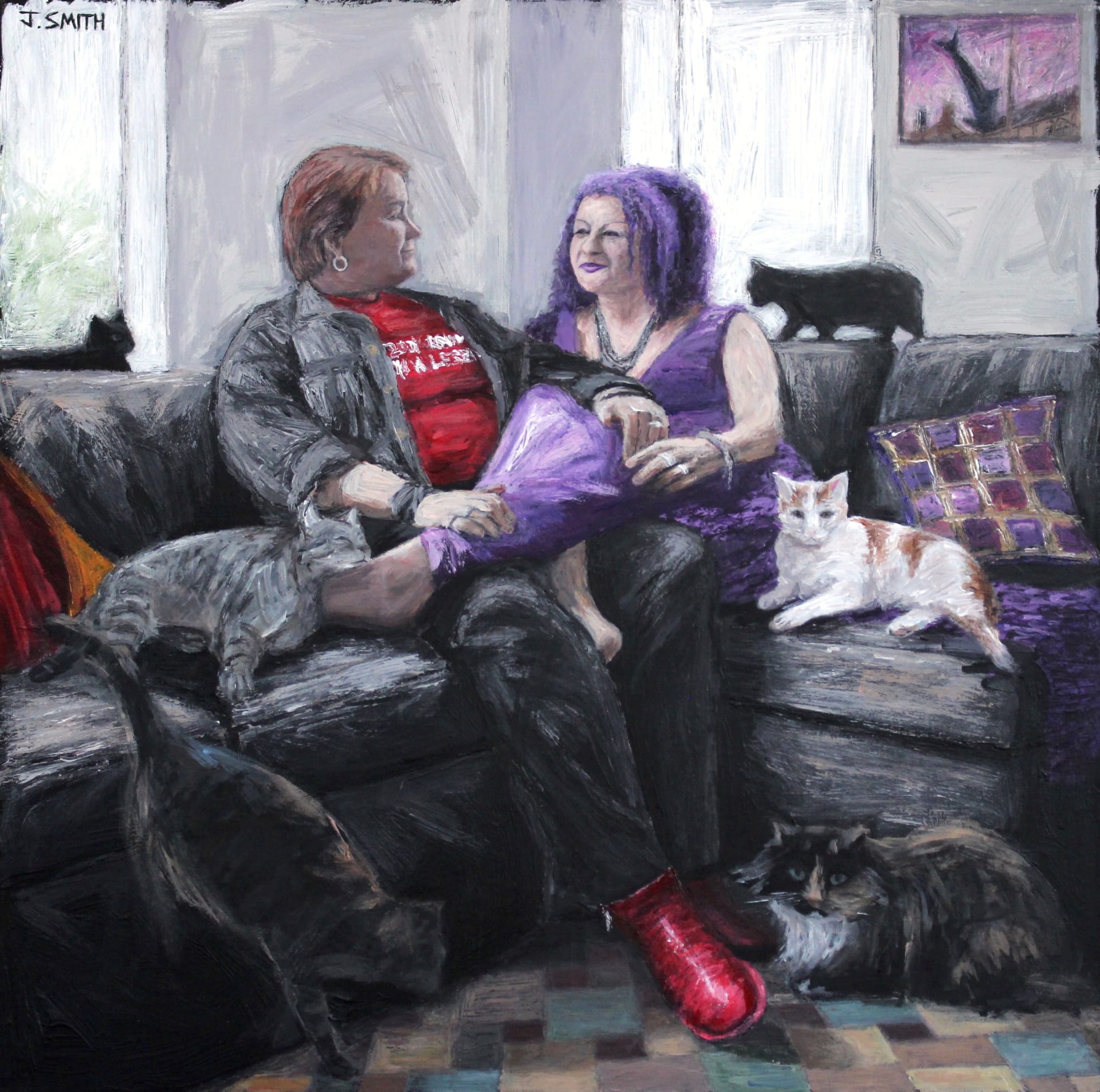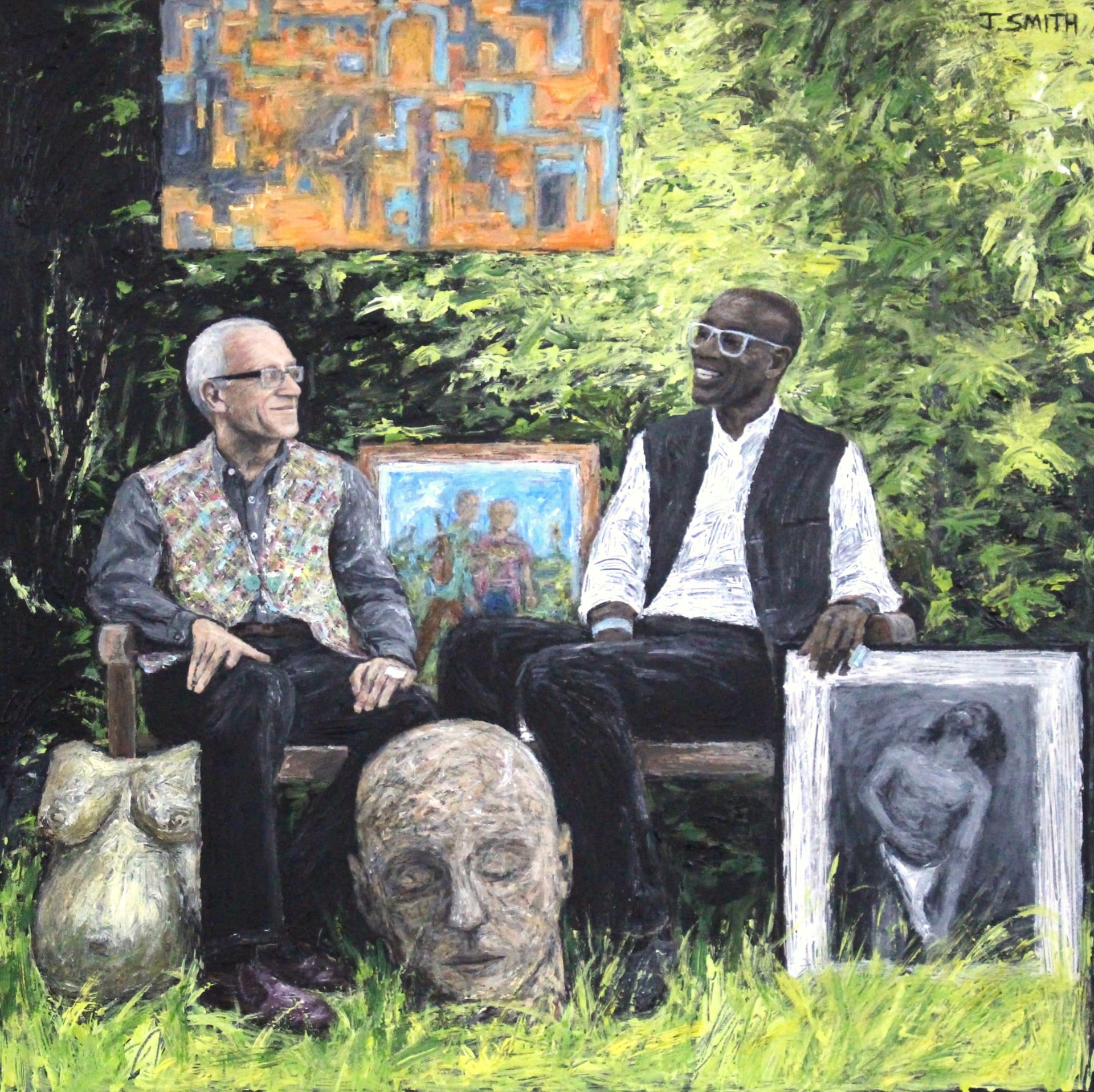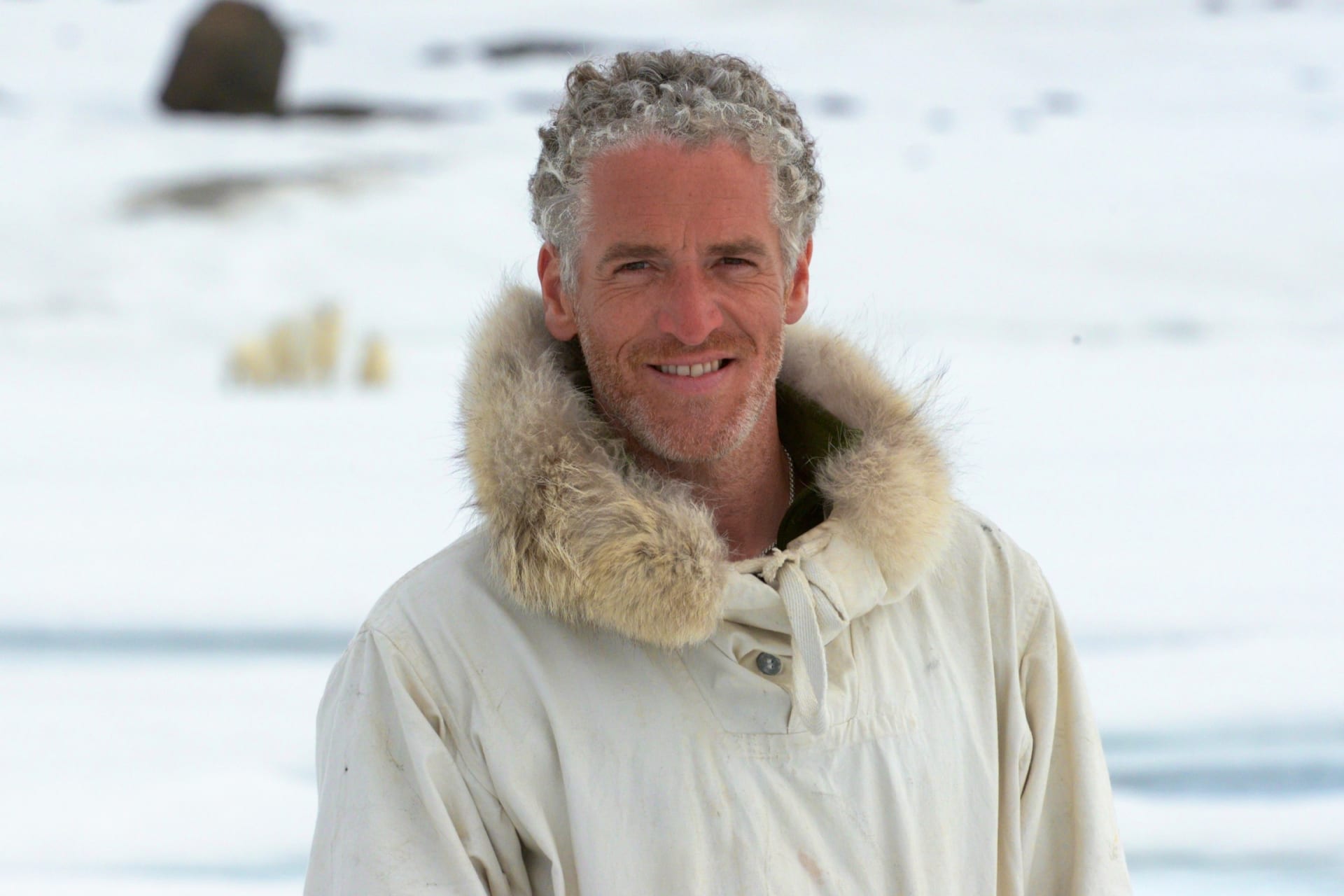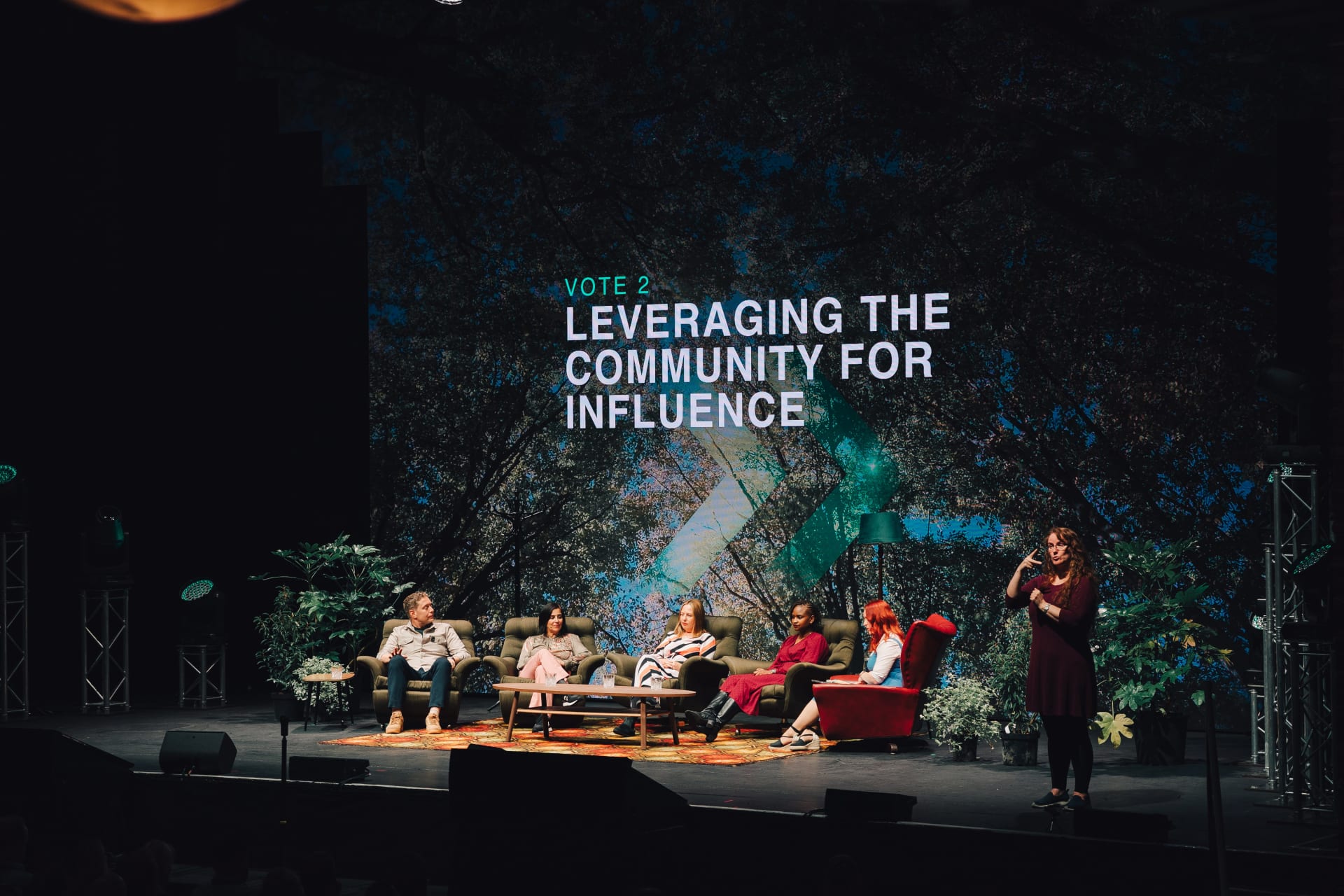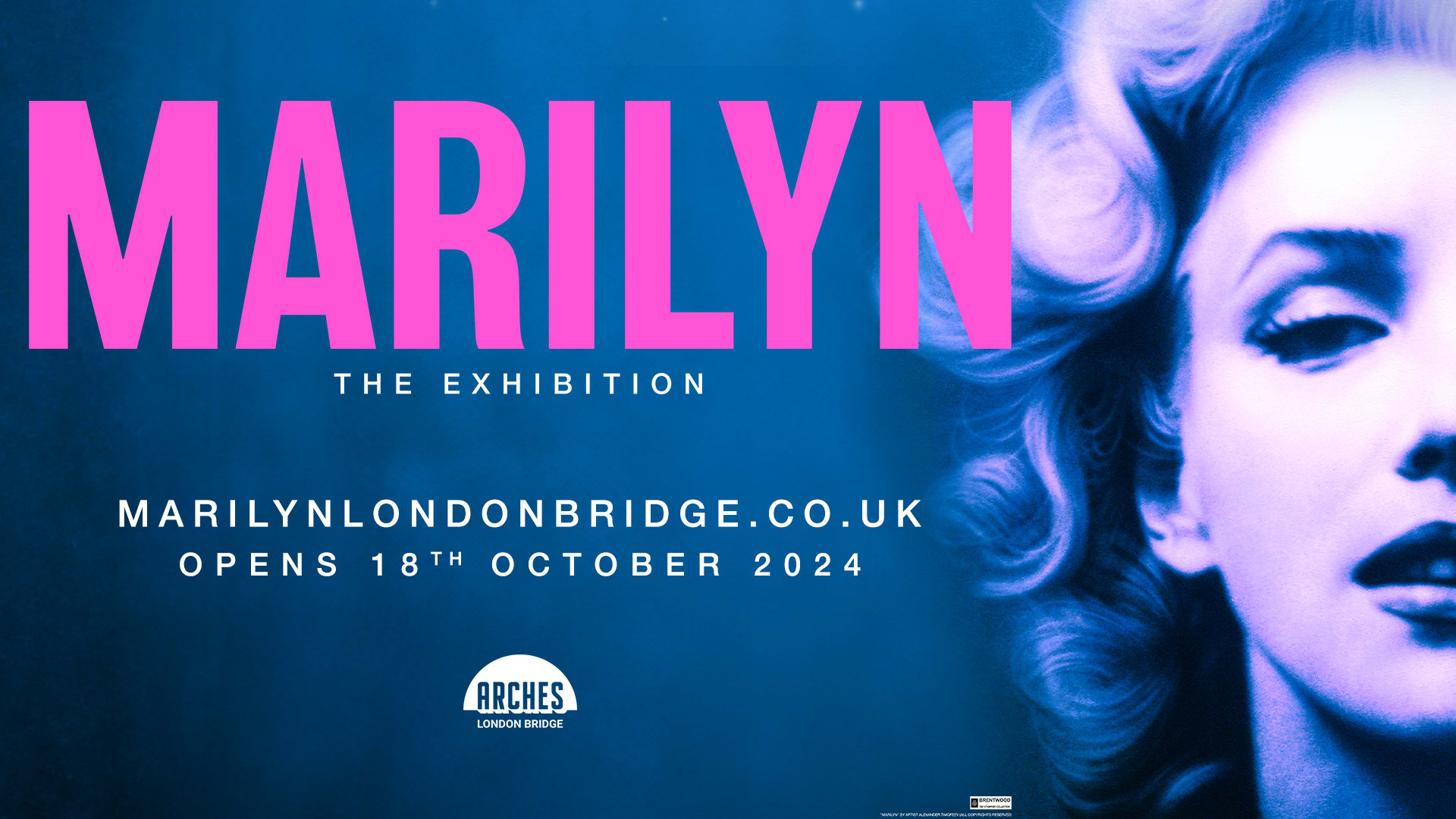Jack Smith is a self-taught artist, taking inspiration from the beauty of Oxford and its LGBTQ+ community. The 23-year-old’s work is currently part of the Queering Spires exhibition, his depiction of the Dragprov Revue – drag double act Christian Adore and Eaton Messe – just one of the pieces decorating the Museum of Oxford. Here he tells us some of the stories behind the paintings.
How did you come to be involved in Queering Spires?
I was exhibiting in the Pitt Rivers, which was a great opportunity and led to another exhibition in University Church. From there I heard about the Queering Spires exhibition in the Town Hall and asked if I could be involved. It’s a snowball effect really, where one exhibition leads to another and I meet contacts along the way.
Talk us through your portrait of the Dragprov Revue.
I was friends with Ed [Scrivens] before he was in the Dragprov Revue, but I remember when I first saw him as Eaton Messe, I was struck by how he transformed into a completely different person. I later met Francesca [Forristal, Christian Adore] and thought I had to paint them – they have a great bond, so I wanted to paint them together. That started my series of queer portraits of people in Oxford.
Explain some of your other queer portraits; Aaron, Xander, Lincoln – what are their stories?
I was previously in a relationship with Lincoln for a couple of years, so when it came to looking for subjects to paint, he seemed like a natural choice for me. He has a strong interest in fencing, which is visually quite interesting. I met Xander a while ago at an LGBTQ+ drinks event. For him, burlesque dancing helps him to overcome issues with mental health, particularly to do with body image. It creates an environment where he can channel his creativity and sensuality and be naked on stage without feeling insecure. I’ve found that for many of the subjects I’ve painted, their talent or area of interest is often an antidote to the stresses or anxieties they might otherwise feel in their lives. Aaron is a DJ who enjoys djing in queer spaces because, for them, dancing is an act of freedom. Queer bodies and desire are still heavily policed. They see djing at LGBTQ+ nights as providing the soundtrack for queer people to resist that policing, and to express themselves in ways that are otherwise forbidden.
Do you refer to the art featured in Queering Spires as queer art?
My paintings in the exhibition are depicting the lives of queer people, so in that sense it is queer art, but it’s not just for queer people to see – it’s for everyone. The exhibition aims to be inclusive, to unite us through the celebration of love and difference.
What does Oxford’s LGBTQ+ community mean to you?
The Oxford LGBTQ+ community is very important to me. I didn’t know any queer people before I arrived in Oxford. After coming out in 2015, I went to the Oxford University LGBTQ+ drinks events. Everyone was very welcoming and I’ve made some great friends. It is like a family, although like in any family, things can get a bit intense sometimes.
We can’t ignore your mightily impressive Pride in London piece…
This painting aims to show the parade in all its glory, passing through Regent Street. I climbed onto the top of a bus stop in order to get the elevated perspective. This allowed me to show much more of the crowd and parade. It’s painted with palette knives, which gives it a thick texture and a dynamic feel to capture the excitement of the day. It’s a big painting so has a lot of presence, it was on the kitchen table for a while because it didn’t fit on my desk – my boyfriend was very patient.
You’re self-taught – how do you go about doing that?
I’ve always painted from a very early age and never stopped. Practice is important. It’s also good to get the right balance of being critical, as well as proud of your work. If you’re too critical, you want to give up. If you’re too proud, you don’t improve.
Did you nearly follow another career path?
I was initially studying architecture, but I spent the whole time painting. I was getting commissions and so made the big decision to become an artist. I learnt a lot from architecture though – it’s given me a good sense of perspective, both in painting and life.
Do you ever feel a bit isolated when painting?
I like the solitude. It’s a good way to recharge. Although I can go a bit crazy if I’m on my own for too long. Sometimes I need to get out more.
Who and what inspires you?
I like to explore and find inspiration in my surroundings. I am based in Oxford and love its beautiful architecture, its meadows and parks. I have done several townscape pieces, capturing Oxford from different angles. Naturally, I also came to depict the people that make up the soul of the city.
What are you working on at the moment?
On one side, I am working on extending my engagement with the LGBTQ+ community. I am currently starting a portrait of Zayna Ratty, the chair of Oxford Pride, while working at the same time on a male nude for a queer exhibition in Cumbria. I also do commissions and they can be quite varied in topics. I’m working on a portrait of a couple in Merton college, and a painting of Coventry Cathedral. I recently finished a commission of the Apollo Sun God.
When you’re not painting, what are you doing?
Naturally, I spend time with my friends, and I can often be found in the Jolly Farmers, Oxford’s gay pub. I’ve also always been a runner and run every other day. It clears my mind.
Are you in any way political?
I’ve become a lot more political in the past few years. Regarding LGBTQ+ issues, we have come a long way – but it’s important not to be complacent. I’ve spoken to a lot of older LGBTQ+ people about how things were; how they had to fight with the police, how all their friends were dying of Aids. My paintings focus on ‘now’ but it’s important to remember ‘then’.

